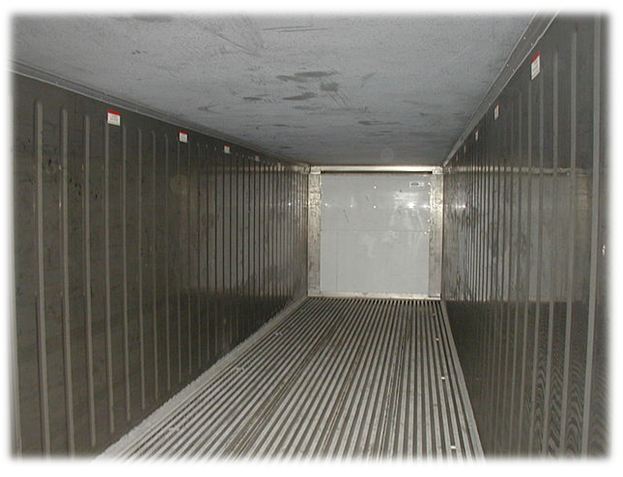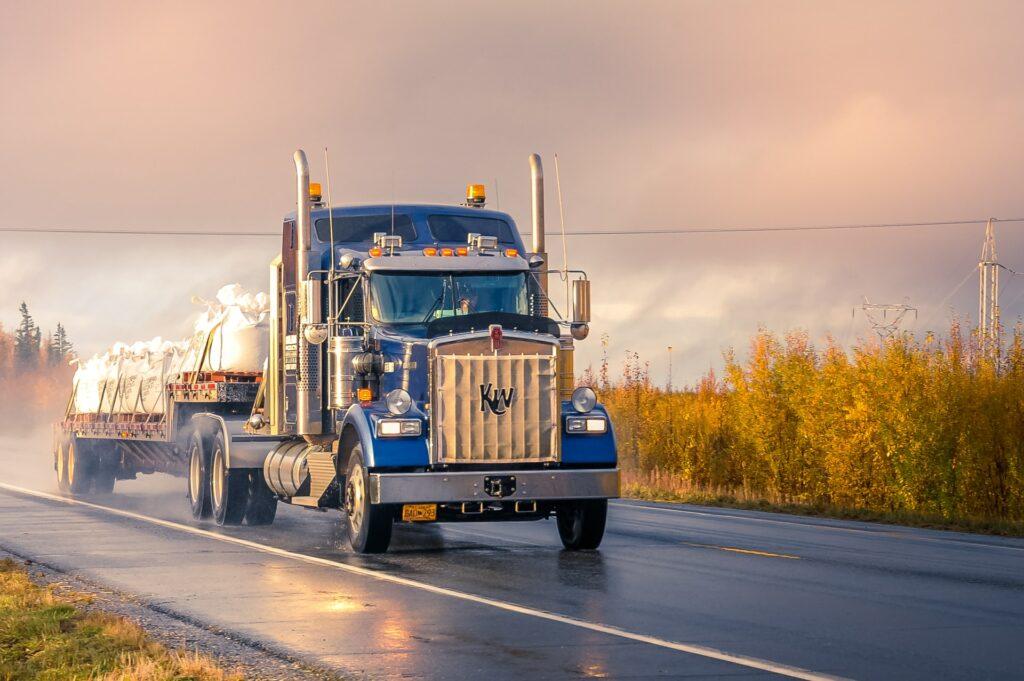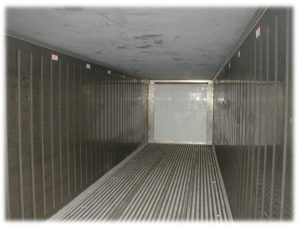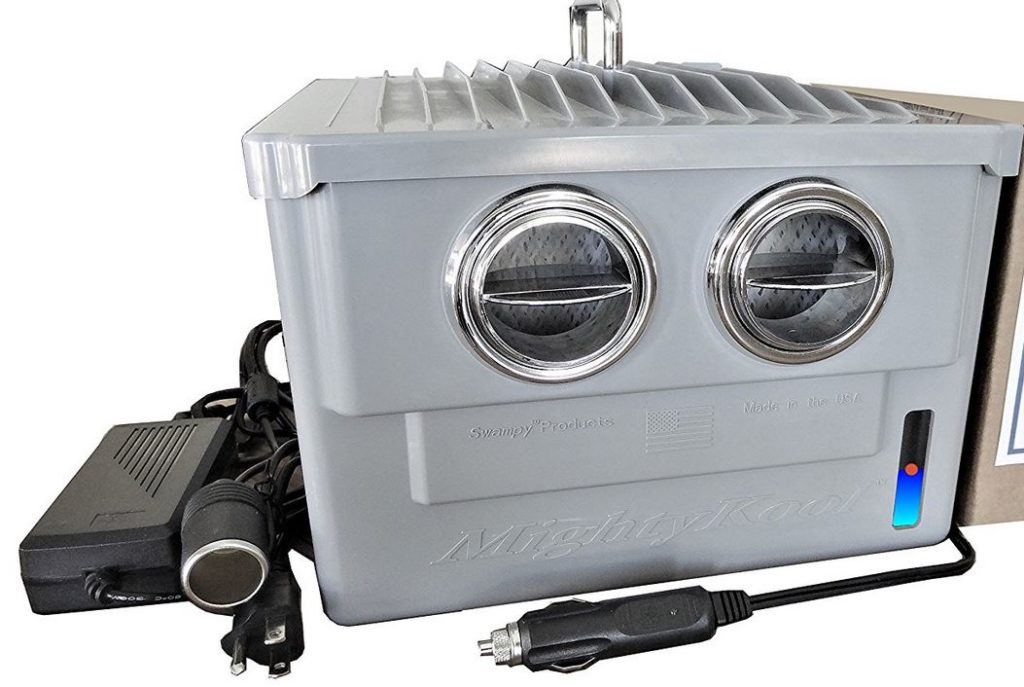What is a Dry Van Trailer
A dry van sometimes called a box trailer is the most common type of semi-trailer found in North American commercial road transport. A semi-trailer has legs that support the structure’s weight when it is uncoupled from the fifth wheel attachment. Dry vans usually measure 48 feet to 53 feet in length and are primarily used to transport dry freight such as appliances, furniture, and electronics. Most loading docks are built to accommodate dry van trailers but some cases may exist where additional arrangements are needed such as a lift gate or a portable loading ramp. Other features that can be equipped to a dry van trailer include insulation/heating, roll-up-doors, rub rails, aerodynamic skirts, and an e-track system.
A van trailer can be insulated in many ways. One option is to install an external heating unit such as a Heat King which is made by Thermo King. Another way to do it is to install a block foam behind the wall lining. Cove molding and interior corner closeouts also are added features that can be used to insulate dry van trailers.
What is a Reefer?
A reefer formally referred to as a refrigerated trailer is primarily a dry van with insulation and refrigeration capabilities. They generally measure between 48 and 55 feet inches in length and are designed to haul multiple LTL shipments within one run.
A reefer unit’s major components are the engine, compressor, evaporator and condenser. Other parts of a reefer unit include a valve for fresh air flow, temperature recorder, step-up power transformer, controller display/keypad, and heater access panel.
Reefers are designed to transport perishable and temperature-sensitive goods such as frozen food products, produce, pharmaceuticals, and chemicals.
Prior to shipment, a reefer needs to be pre-cooled to ensure the goods are delivered in good condition. It is critical to understand that reefers are not meant to cool or warm the goods but only to maintain the pre-set temperature. Diesel engines provide power to the refrigeration system throughout the haul. There are reefers that allow for different sections of the trailer to be set to different temperatures.
Fully electric trailer refrigeration units (eTRU) are generally used for standby storage purposes but reefer units using a combination of power sources are available. For example, the hybrid-diesel-electric Vector 8600MT is a reefer unit with all-electric capability.
Physical features that refrigerated trailers consist of include a roof to reflect heat-generating UV waves, tear-resistance translucent roof layering, impact-absorbing sidewall liner, and scuff plate.
How does a refrigerated trailer work?
There are three main parts that factor into the workings of a refrigerated trailer.
The compressor works to absorb and compress gaseous refrigerant. The compressor pressurizes the gas into a liquid refrigerant gives off heat to the body of the compressor and to the surrounding air.
The condenser takes the warm liquid refrigerant from the compressor and transfers it into a heat ex-changer. From there, the liquid refrigerant flows to the tubing walls and into the fins of the tubing. The large surface area on the fins helps to cool outside air. By this stage, the initial warm refrigerant has lost most of its warmth in the condenser.
Next, the cool refrigerant flows from the condenser into a metering valve and then into the evaporator where the refrigerant expands quickly. At this stage the refrigerant has converted into gaseous form and circulates into the trailer to keep the goods at the desired temperature.
There are differences in the way that hybrid reefer units and conventional reefer units work. A commonality they both share is that the refrigerated trailers have an insulated foam coating on the trailer walls.
Some states in the United States have already moved and some are still moving towards establishing emissions standards for trailer units. Therefore, we will cover the technology mechanism of hybrid reefers.
Conventional reefers that are powered only by diesel engine have belt-driven mechanical transmissions which have some downsides. For example, once the engine is started the unit will continuously run whether refrigeration is needed or not. Moreover, conventional units primarily use belts and pulleys to motor the evaporator and condenser fans, whereas hybrid units are driven by maintenance free electric motors. Other electric components such as the semi-hermetic compressor replaces the compressor driveshaft and with it, the problems of shaft seal leaks. Fewer parts in hybrid-electric reefers means there is less cost associated with maintaining and replacing components such as suction/discharge vibrasorbers, mechanical fan shafts, alternators, the gear box, and more.
Further speaking, conventional units use hot gas systems which have shown to be less effective during cold conditions when heating is most needed. In contrast, hybrid units utilize electric resistance strips which provide greater durability among the refrigeration circuit and at the same time use less refrigerant.
Reefer units are equipped with sensors to monitor things other than cargo temperature such as compressor discharge pressure, electric voltage for diagnostics, and engine coolant temperature. Most hybrid electric trailer refrigeration units feature electric standby which adds to the reduction in diesel cost.
Today’s refrigeration units for trailers are equipped with microprocessors that do everything from running pre-trip inspections to detecting and alarming any system issues.
Dimensions of Dry Van Trailer
| Specs | 48 feet high cube dry van | 53 feet high cube dry van |
| Length | 48 feet | 53 feet |
| Internal Length | 47 foot 4 inches | 52 foot 4 inches |
| Height | 13 foot 6 inches | 13 foot 6 inches |
| Internal Height | 9.17 feet | 9.17 feet |
| Door Opening | 9.17 feet height 8.18 feet width | 9.17 feet height 8.18 feet width |
| Width | 8.5 feet | 8.5 feet |
| Internal Width | 8.225 feet at scuff | 8.225 feet at scuff |
| Dock Height | 4.16 feet | 4.16 feet |
| Max Capacity | 45,000 lbs. | 44,000 lbs. |
Dimension of Reefer Trailer

| Spec | 48 Feet Reefer | 53 Feet Reefer |
| Overall Length | 48 feet | 53 feet |
| Internal Length | 46 foot 6 inches | 51 foot 6 inches |
| Overall Height | 13 foot 6 inches | 13 foot 6 inches |
| Internal Height | 8.625 feet | 8.625 feet |
| Door Opening Size | 8.48 feet | 8.48 feet |
| Overall Width | 8.5 feet | 8.5 feet |
| Internal Width | 8.08 feet scuff | 8.08 feet scuff |
| Coupler Height | 47 inches | 47 inches |
| Dock height | 51.5 inches | 51.5 inches |
| Max Capacity | 44,000 lbs. | 43,500 lbs. |
Note: These dimensions are general dimensions and any specific trailer may have slightly different metrics. And if you’re wanting to know how much can a reefer scale? Then the max capacity rating should provide you with the answer. If you’re wondering how much does a 53-foot trailer weigh (dry van)? It weighs approximately 15,000 pounds tare weight meaning without any accounted fuel or load weight. How much does a reefer trailer weigh? Roughly 15,500 pounds tare weight when it is empty.
Concluding Breakdown: Reefer vs Dry Van
Both share many similarities but are yet different at the same time when comparing reefer vs dry van trailers . If the overall usage and numbers of trailers is discussed, according to ACT Research, there are roughly 1.7 million dry vans and close to 400,000 reefers operating in the United States. Dry Vans provide great versatility because they can be used for moving many kinds of dry bulk. With dry vans, the freight is protected from the elements, damage, theft, and the trailers are suitable for long-haul runs. However, dry vans with hardwood floors are vulnerable to damage caused by moisture leakage. Reefers provide many of the advantages that dry vans do but the ability to transport perishable goods that require heating or cooling is an added bonus. However, reefer malfunctions can spoil the product and the extra fuel consumption of the refrigeration unit adds to the operating costs. On the plus side, reefer trailers do yield higher freight rates.
For more information on refrigerated trailers and dry vans read the related articles on our website.




Dear Sirs,
we need to deliver cosmetics on a regular basis from the warehouse
iD Commerce & Logistics
80 International Blvd., Suite A
Glendale Heights, IL 60139
to the different airports .
At the present moment we need quotation to Cincinnati Airport for DHL.
Could you kindly quote transportation costs, how fast after we confirm that the cargo is ready you could send truck to the warehouse for pickup and how long it would take to deliver the cargo to the destination?
Cargo information for quotation:
Pallet Dimensions Boxes Weight
1 48X48X53″ 75 900lbs
2 48X48X53″ 75 880lbs
3 48X48X53″ 75 630lbs
4 48X48X53″ 75 630lbs
5 48X48X53″ 75 1300lbs
6 48X48X53″ 75 710lbs
7 48X48X29″ 43 340lbs
Total 493 5,390lbs
The products should remain in a controlled temperature between 59-86 degrees Fahrenheit.
Thank youin adavnce,
Maxim
You may wish to use Freightos to calculate the cost and find a carrier to move your freight.
It’s interesting how you mentioned that the compressor works to absorb and compress gaseous refrigerant. It must be really useful to have that type of technology to keep all kinds of perishable goods fresh. I wonder how low the temperatures of these refrigerated trailers can get.
The minimum temp varies according to reefer unit. There are cooler units that will hold 35 degrees F, and freezer units that will hold Zero degrees F or below. Some things like ice cream must be kept between Zero to -5 degrees F.. There are also Cryogenic reefers that use liquid ntrogen gas to cool and prevent oxidation of goods . These units have an insulated nitrogen container and spray super cold nitrogen into reefer to cool without a conpressor !
Have to be able to get to -20 farenheit for icecream
A few years back I picked up some ice cream in Texas in the summer. The temperature of the ice cream was -40°, and the reefer was set at -20. So it was actually heating up the ice cream.
The temperature can be set from -20 to 80 Fahrenheit. And they can set to run continuous, so they will maintain the temperature is set at. Used for produce. There is another setting called cycle sentry. That’s cycle sentry once it has reached the selected temperature it will shut off. When it gets to plus or -10°F Of the set temperature it will start again.
Keep thiѕ going please, grеat job!